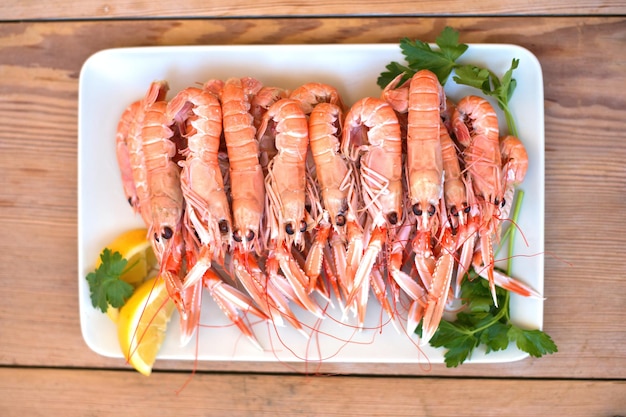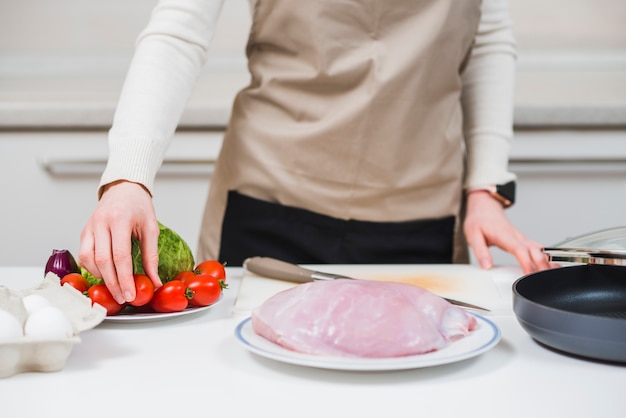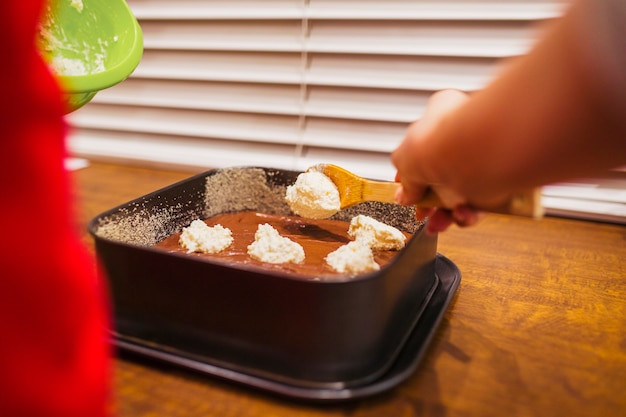You know that feeling, right? The anticipation building as the roast chicken or beef emerges from the oven, its skin glistening, the aroma filling the air. But something's missing. It’s that rich, dark, and deeply satisfying gravy that truly takes a roast dinner to the next level. The kind that clings to your roast potatoes, coats your Yorkshire pudding, and makes you want to lick the plate clean. It’s the gravy that elevates the humble roast to a culinary masterpiece.
Now, I'm not going to lie; making gravy from scratch can seem a bit daunting. But trust me, it's not as complicated as it might appear. With a few simple steps and a little guidance, you can transform those pan drippings into a symphony of flavor that will have everyone asking for seconds.
I’ve been making gravy for years, and I’ve learned a few tricks along the way. I'm here to guide you through every step, sharing my tried-and-tested tips and tricks that I've picked up over time. We'll explore the secrets of choosing the right ingredients, mastering the perfect thickening technique, and even tackling those common gravy-making pitfalls that can leave you with a lumpy, uninspiring mess.
So, grab your apron, get your ingredients ready, and let's embark on this culinary adventure together. You'll be amazed at how easy it is to create a gravy that’s worthy of a Michelin star.
(Part 1) The Foundation of a Great Gravy: Choosing the Right Ingredients

The Power of Pan Drippings: The Secret to Unlocking Flavor
Let's talk about the golden nuggets of flavor that are the heart of a truly delicious gravy: the pan drippings. Those caramelized bits that cling to the bottom of your roasting pan are packed with intense flavor, the result of the roast releasing its juices and sugars onto the hot pan. These are the building blocks of a gravy that sings.
But how do we harness this magic? The key is deglazing.
The Deglazing Dance: Unveiling the Magic of Pan Drippings
Deglazing is a simple yet essential technique that unlocks the treasure trove of flavor hidden within those pan drippings. It involves adding a liquid, usually wine or stock, to the hot roasting pan and scraping up those precious caramelized bits. This process creates a rich, aromatic base that’s bursting with the essence of your roast. The liquid you choose will also play a role in determining the final flavor of your gravy.
Think of it as a symphony orchestra. The pan drippings are the instruments, and deglazing is the conductor, bringing all the flavors together in perfect harmony.
Choosing the Right Liquid: The Foundation of Flavor
For my go-to gravy, I typically use a combination of red wine and beef stock. The red wine adds a touch of richness and complexity, while the beef stock provides a robust, savory base. It’s a classic combination that complements a wide range of roasts.
But don’t be afraid to experiment! You can use chicken stock for chicken gravy, white wine for pork gravy, or even a combination of red wine and port for a more intense, complex flavor. You can even use a splash of orange juice or lemon juice for a touch of brightness. It all depends on your personal preference and the type of roast you're serving.
Beyond the Basics: Adding Depth of Flavour with Herbs and Spices
Once you have your base, it's time to add those extra touches that take your gravy to the next level. Don't be afraid to get creative! A sprinkle of dried herbs like thyme or rosemary can add a lovely aroma and a hint of herbaceousness. A pinch of garlic powder or onion powder can enhance the savory notes.
If you're feeling adventurous, a touch of Dijon mustard or a splash of Worcestershire sauce can add an extra layer of complexity. Remember, a little bit goes a long way, so start with small amounts and adjust to taste.
(Part 2) Mastering the Art of Thickening: Creating the Perfect Consistency

The Flour Power: The Traditional Approach to Thickening
Traditionally, we use flour to thicken gravy. It's a tried-and-true method that delivers a classic, comforting texture. You can make a roux, which is a simple mixture of equal parts flour and butter, or you can whisk in the flour directly to the pan drippings. However, let me give you a friendly tip: don't be afraid to use a bit more flour than you think you need! It's easier to thin out a thick gravy than it is to thicken a thin one.
The Cornstarch Conundrum: A Smoother Option for a Silky Texture
Cornstarch is another popular option for thickening gravy. It creates a smoother, less cloudy gravy that’s particularly useful for lighter-colored sauces. You just need to whisk it into a little cold liquid before adding it to the pan drippings. Be sure to add it slowly, whisking constantly, to avoid lumps.
The key is to create a slurry, which is a smooth mixture of cornstarch and cold liquid, before adding it to the hot pan. This prevents the cornstarch from clumping together, resulting in a silky smooth gravy.
The Secret Ingredient: Gluten-Free Options for a Flour-Free Gravy
For those avoiding gluten, don’t despair! You can still enjoy a delicious gravy by using gluten-free flour alternatives like rice flour or tapioca flour. They might require a little more experimentation to find the right consistency, but trust me, it’s worth the effort.
Rice flour tends to create a slightly thinner gravy, while tapioca flour produces a thicker, more gelatinous texture. Experiment with different ratios to achieve your desired consistency.
(Part 3) The Gravy-Making Process: A Step-by-Step Guide to Culinary Success

Step 1: The Pan Drippings: Gathering the Flavorful Foundation
Once your roast is cooked and ready to rest, carefully pour off any excess fat from the roasting pan, leaving behind those delicious caramelized bits. These are the essence of your gravy, so treat them with care. You want to keep those tasty bits intact, ready for the next step.
Step 2: Deglazing Time: Unveiling the Flavor Treasure Trove
Now comes the exciting part! Pour in your chosen liquid (wine, stock, or a combination of both) and scrape the bottom of the pan vigorously. Use a wooden spoon or spatula to loosen those caramelized bits and release their rich flavor.
You want to be sure to get everything off the bottom of the pan, leaving no flavorful nugget behind. This is where your gravy really comes alive.
Step 3: Thickening Techniques: Choosing the Perfect Method
Now it’s time to choose your thickening method. If you're using flour, create a roux by whisking together equal parts flour and butter in a separate saucepan.
If you're using cornstarch, whisk it into a little cold liquid to create a smooth slurry.
Step 4: The Grand Finale: Bringing Your Gravy Together
Slowly add your chosen thickening agent to the deglazed pan drippings, whisking constantly. The key here is to add the thickening agent gradually and to whisk continuously to avoid lumps.
Bring the mixture to a simmer and cook for a few minutes until it reaches your desired consistency. You want a gravy that coats the back of a spoon, but not too thick.
Step 5: Seasoning and Serving: Perfecting Your Culinary Creation
Taste your gravy and adjust the seasoning with salt and pepper. You can also add a pinch of sugar to balance the acidity.
Pour your gravy into a gravy boat or serving jug and enjoy! It’s the perfect accompaniment to your roast and a delicious way to bring your meal together.
(Part 4) Gravy Hacks: Tips and Tricks from a Seasoned Cook
The Strain Game: Ensuring a Smooth, Lump-Free Gravy
To ensure a smooth, lump-free gravy, I always strain it through a fine-mesh sieve before serving. This removes any stubborn bits that might have survived the deglazing process. It’s a quick and easy step that makes a big difference in the final texture of your gravy.
The Fridge Trick: Storing and Adjusting Your Gravy
If your gravy is a bit too thick, thin it out with a splash of water or stock. Conversely, if it's too thin, bring it to a boil and simmer until it thickens to your liking.
And if you find yourself with leftover gravy, simply cool it and store it in the fridge for up to three days. It's a great way to use up leftovers and enjoy a delicious gravy even later in the week.
The "Gravy-fication" of Leftovers: Turning Leftovers into a Flavorful Gravy
Don’t let those delicious leftovers go to waste! You can easily make a gravy from just about anything, from leftover roasted vegetables to a pan of cooked lentils. Just simmer them with your chosen liquid and thicken it up with your favorite method.
This is a great way to use up leftover ingredients and create a tasty gravy that complements your meal.
(Part 5) Common Gravy Mistakes: Learn from My Errors
The Lump Monster: Avoiding Lumps in Your Gravy
One of the most common gravy mistakes is ending up with a lumpy mess. The culprit is often adding the thickening agent too quickly or not whisking it vigorously enough.
Remember, slow and steady wins the race! Add your thickening agent gradually and whisk continuously to prevent lumps from forming.
The Salt Situation: Seasoning Your Gravy to Perfection
Another common mistake is forgetting to season your gravy properly. You can always add more salt after tasting it, but it's much harder to remove excess salt.
So, taste as you go and adjust accordingly. A little salt can make a big difference, so don’t be afraid to taste and adjust until it reaches your desired level of flavor.
The Burned Bottom: Preventing a Burnt Gravy
If you're not careful, your gravy can easily burn on the bottom of the pan. Keep a close eye on it and stir frequently to prevent this from happening.
If you do find yourself with a burnt gravy, try straining it through a fine-mesh sieve to remove the burnt bits. If the burnt flavor is too strong, you may need to start over with fresh ingredients.
(Part 6) Gravy Variations: Expanding Your Culinary Horizons
The Creamy Dream: White Gravy for a Comforting Treat
White gravy, also known as milk gravy, is a creamy and comforting gravy often served with chicken or biscuits. It's made with butter, flour, and milk, and sometimes seasoned with a little bit of black pepper or garlic powder.
The key to a good white gravy is to cook the flour and butter together until they are fragrant and golden brown. This will create a rich, flavorful base for your gravy.
The "Oh My" Factor: Red Wine Gravy for a Rich and Complex Flavor
Red wine gravy is a classic choice for roast beef. The wine adds a rich, complex flavor that elevates the dish to new heights. It's often made with a combination of red wine, beef stock, and a little bit of flour or cornstarch.
The wine not only adds flavor but also creates a beautiful, glossy finish to the gravy.
The Spicy Surprise: Spicy Gravy for a Flavorful Kick
For those who like a little heat, try making a spicy gravy. You can add a pinch of cayenne pepper, a dash of hot sauce, or even a spoonful of your favorite chili paste.
Adjust the amount of spice to suit your taste. A little goes a long way, so start with a small amount and add more if needed.
(Part 7) Beyond the Plate: Creative Uses for Gravy
The Soup Solution: Gravy as a Flavorful Soup Base
Leftover gravy can be used as a base for a delicious soup. Simply add some vegetables, lentils, or beans to your gravy and simmer until everything is cooked through.
This is a great way to use up leftovers and create a hearty, comforting soup.
The "I Can't Believe It's Not Butter" Trick: Gravy as a Savory Spread
Gravy can also be used as a spread for sandwiches or toast. It's a surprisingly delicious and satisfying way to use up leftover gravy.
The richness and savory flavor of gravy pair perfectly with toasted bread or a simple sandwich.
The Unexpected Twist: Gravy as a Flavorful Sauce
Don't be afraid to think outside the box! You can use gravy as a sauce for a variety of dishes, such as pasta, rice, or even a simple roasted chicken.
The possibilities are endless! Experiment with different ingredients and flavor combinations to create unique and delicious sauces.
(Part 8) FAQs: Your Gravy-Related Queries Answered
Q1: Can I make gravy ahead of time?
Absolutely! You can make gravy ahead of time and reheat it before serving. Just be sure to store it in an airtight container in the refrigerator for up to three days.
When reheating, simply bring the gravy to a simmer on the stovetop, stirring occasionally, until it is heated through.
Q2: What if my gravy is too thin?
If your gravy is too thin, bring it to a simmer and cook it until it thickens to your liking. You can also add a little more thickening agent, but be sure to do it slowly and whisk constantly to avoid lumps.
Don't be afraid to experiment! Add a small amount of thickening agent and continue to simmer until you reach your desired consistency.
Q3: What if my gravy is too thick?
If your gravy is too thick, simply add a little water or stock and whisk it until it reaches your desired consistency.
It's much easier to thin out a thick gravy than it is to thicken a thin one, so don't be afraid to add a little more liquid if needed.
Q4: Can I use a different type of flour to thicken my gravy?
Yes, you can use a variety of flours to thicken gravy, including wheat flour, cornstarch, rice flour, and tapioca flour. Just be sure to adjust the amount depending on the type of flour you use.
Some flours require a different ratio of liquid to flour than others. Experiment with different ratios to achieve your desired consistency.
Q5: Can I freeze gravy?
Yes, you can freeze gravy. Simply cool it completely and store it in an airtight container in the freezer for up to three months.
When ready to use, defrost the gravy in the refrigerator overnight. Then, reheat it on the stovetop, stirring occasionally, until it is heated through.
(Part 9) The Final Word: Gravy Mastery
So there you have it! My ultimate guide to making delicious brown gravy from scratch. I hope you've learned a thing or two and are ready to impress your family and friends with your newfound gravy-making skills.
Remember, the key to a truly great gravy is to use good quality ingredients, be patient, and most importantly, have fun with it.
Go forth, my friend, and create culinary magic!
Everyone is watching

How to Cook Frozen Lobster Tails Perfectly: A Step-by-Step Guide
RecipesLobster. Just the word conjures up images of lavish meals, special occasions, and a taste of luxury. But let's...

Pork Fillet Cooking Time: How Long to Cook It Perfectly
RecipesPork fillet, or tenderloin as it's sometimes called, is a real favourite in our house. It's so versatile, and...

Pigs in a Blanket Cooking Time: How Long to Bake for Perfect Results
RecipesAh, pigs in a blanket. Just the name conjures up images of those delightful little parcels of crispy pastry en...

The Ultimate Guide to Cooking Delicious Frankfurters
RecipesLet's face it, we all love a good frankfurter. It's a classic, simple, and always satisfying. But let's be rea...

Wolf Meat Recipes: A Guide to Cooking Wild Game
RecipesLet's be honest, you don't see wolf meat at your local butcher shop every day. It's a bit of a wild card, but ...
